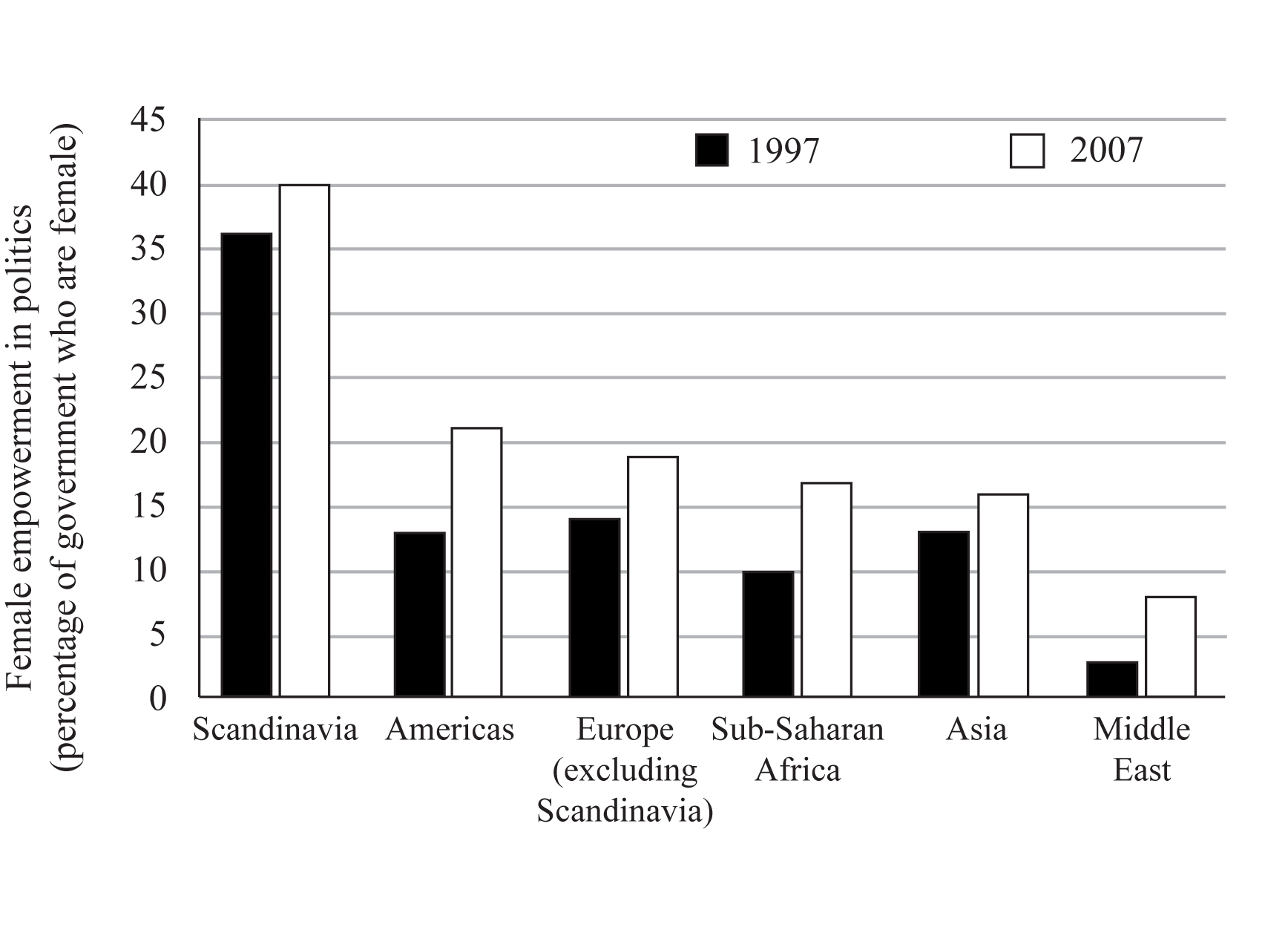| Date | May 2011 | Marks available | 4 | Reference code | 11M.1.bp.1 |
| Level | SL and HL | Paper | 1 | Time zone | |
| Command term | Suggest | Question number | 1 | Adapted from | N/A |
Question
The graph shows how female empowerment in politics has changed in different regions since 1997.
[Source: adapted from UNESCO]
Referring to the graph, describe how female empowerment in politics varied between regions in 1997.
Suggest reasons why female empowerment in politics has risen since 1997.
Analyse the pro-natalist policy of a country you have studied.
Markscheme
Scandinavia as a region has the greatest with approximately 36% involved in government [1 mark]; the Middle East has the lowest involvement of women in government with approximately 3% [1 mark]; the rest of the world averages between 10% and 14% [1 mark]. No quantification or only a list with values should be awarded 2 marks maximum.
Any four valid reasons should be awarded 4 marks. Any two valid reasons that are fully developed and/or make use of examples should be awarded 2×2 marks.
Cultural – changing value systems; policies designed to increase female participation.
Education – more women qualified; many of the MDGs promote women’s rights; decreased family size/later marriage – women’s roles changing; legal rights increasing in some countries.
Italics relate to the syllabus bullet point gender and change.
A valid country and policy should be chosen as an example [1 mark]. Award additional marks for further description of the specific policy [2 marks]. The final 2 marks are reserved for some analysis where candidates break down the policy in order to bring out the essential elements or structure and/or provide some evaluation of the policy’s success/failure.
Examiners report
This question was misread by a large number of candidates who described the temporal changes as opposed to the situation in 1997. It was still possible to grant some marks though if they described and quantified the situation in 1997. A significant number of candidates scored full marks for this question.
This question was on the whole well answered with candidates opting for breadth or depth. Reasons given were quite varied ranging from the role of the MDGs, cultural diffusion, the impact of media networks, NGOs working on gender issues, governments introducing quotas etc. Sometimes the reasons were not linked back to the question though, that is, empowerment in politics, which prevented full marks from being awarded.
Some excellent and detailed responses here with the popular examples being Singapore, France, Sweden, Spain and Japan. However, some candidates failed to analyse (they just described the policy) and therefore did not get full marks. Some candidates relied on policies from the 1950s and 1960s; although they still accessed the marks it would have been better if they had studied more up-to-date case studies. A minority of candidates used anti-natalist policies, which scored no marks.

